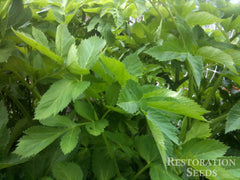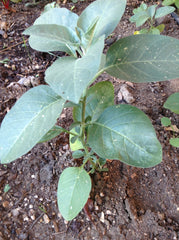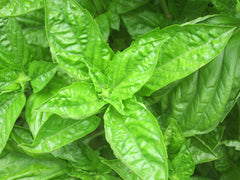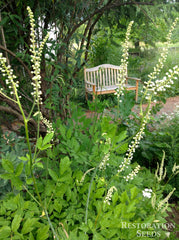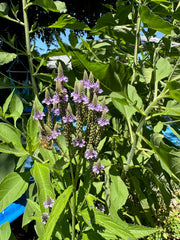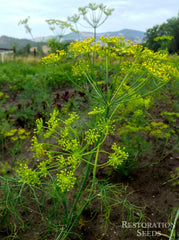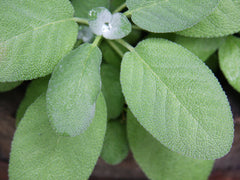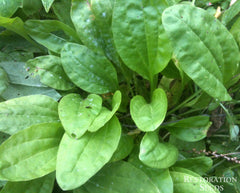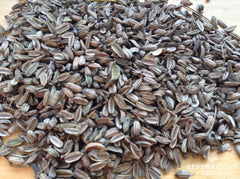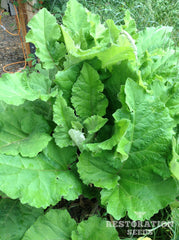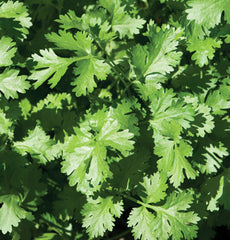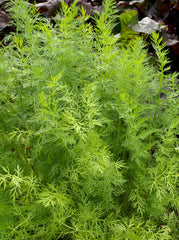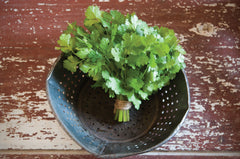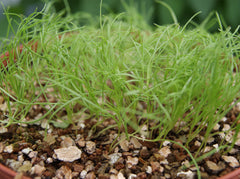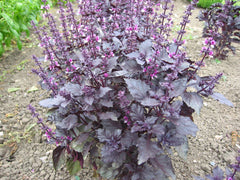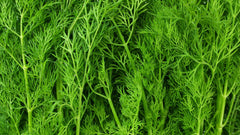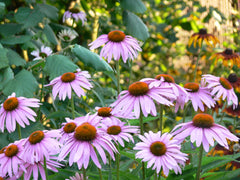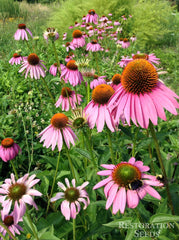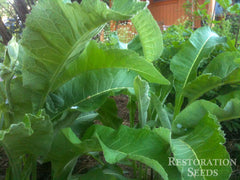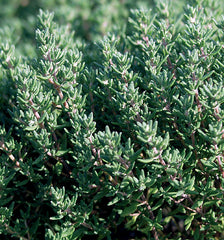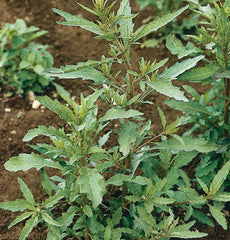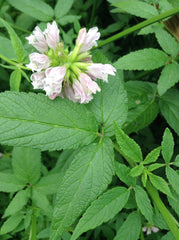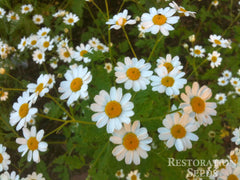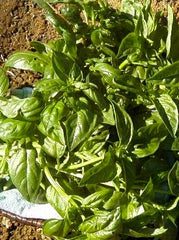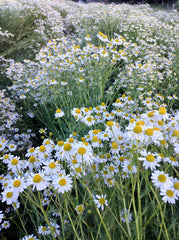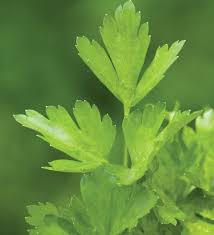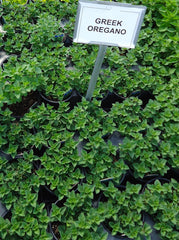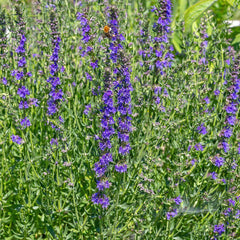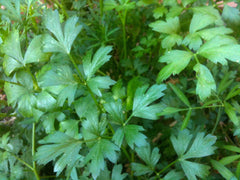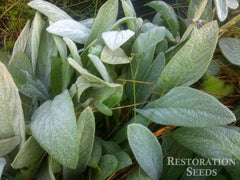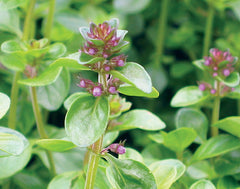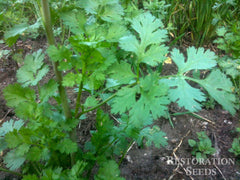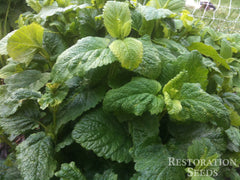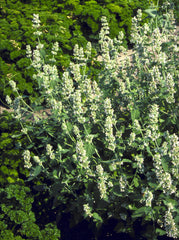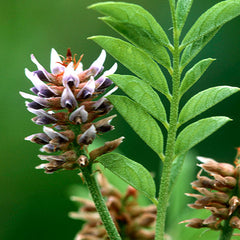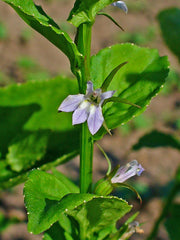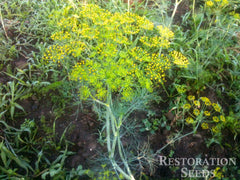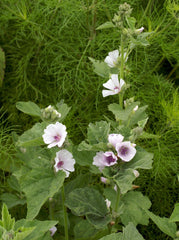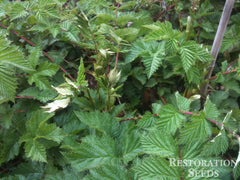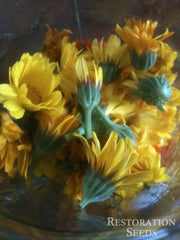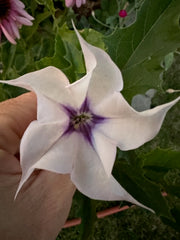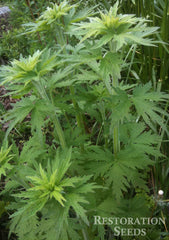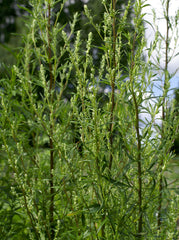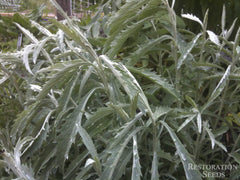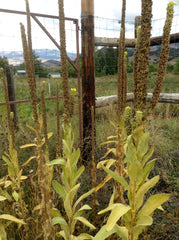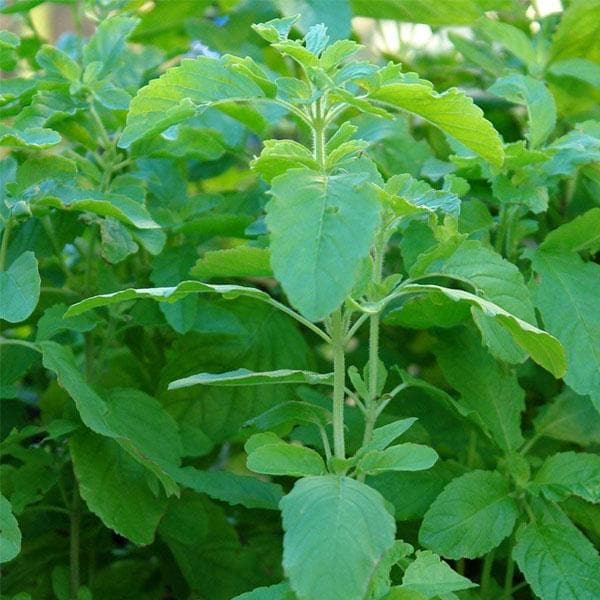Tulsi Rama
Ocimum tenuiflorum
HOW TO GROW TULSI BASIL
Sow seeds directly in late spring when nights are above 65˚F. Surface sow, pressing in firmly, keep moist but not wet. Start indoors 4-6 before warm evenings. Do not pinch buds to encourage further branching, this reduces plant vigor. Dry herb bunches by hanging from ceiling or lay on screens in a dark, dry, ventilated location. Harvest for drying at peak maturity when flowers are just beginning to appear, leaves contain the most essential oils at that time. Or, after that oils are transferred to flowers, strip the dried flower columns in fall for the best tea and to save seeds. Less frost sensitive than Ocimum basilicum. Can be ripened out doors in cool climates such as Skibbereen Co. Cork, Ireland. Soil pH 6.1-8.5. Hardiness zones 7-11. Annual.
Days from maturity calculated from the date of seeding. Average 22,400-142,000 seeds per ounce. There are no Federal germination standard commercially sold herb seeds. Usual seed life 3-5 years. Isolation distance for seed saving: 150 feet.
Planting Depth 1/4”
Soil Temp. Germ. 70-85˚F
Days to Germ. 7-14
Plant Spacing 2’
Row Spacing 12-24”
Full Sun, Moist Well Drained
Days from maturity calculated from the date of seeding. Average 22,400-142,000 seeds per ounce. There are no Federal germination standard commercially sold herb seeds. Usual seed life 3-5 years. Isolation distance for seed saving: 150 feet.
Planting Depth 1/4”
Soil Temp. Germ. 70-85˚F
Days to Germ. 7-14
Plant Spacing 2’
Row Spacing 12-24”
Full Sun, Moist Well Drained
- 150 Seeds$4.10
Tulsi basil originated in India as an aromatic perennial shrub, medicinal or culinary herb tea and oils. The aroma is spicy and complex, similar to clove. Four common varieties: Rama Tulsi is hardy, easy to grow and our favorite for a soothing tea. Vana Tulsi has slightly fuzzy leaves, is a larger plant and is close...
Tulsi basil originated in India as an aromatic perennial shrub, medicinal or culinary herb tea and oils. The aroma is spicy and complex, similar to clove. Four common varieties: Rama Tulsi is hardy, easy to grow and our favorite for a soothing tea. Vana Tulsi has slightly fuzzy leaves, is a larger plant and is closer to the wild form. Tulsi Kapoor has shiny green leaves, best for culinary uses, smaller plant. Tulsi Krishna has purple leaves, slightly more difficult to germinate.
Learn More
Meet Your Farmer
We promote fair trade, organic practices and environmental responsibility throughout the Restoration Seeds supply chain. Below are the family farmers and seed suppliers who bring our open pollinated seeds to you.
White Dog Farm
Organically Grown
Seed grower since 2019


White Dog Farm is nestled in the Williams Valley and is home to Greg & Kate Stanko. We are stewards of a 5 acre farm shared by sheep, chickens, pigs and Puja, our LGD. Our passion is to nurture the earth, grow flowers and vegetables sustainably using organic practices. Correspond to whitedogfarm57@gmail.com.
Reviews
